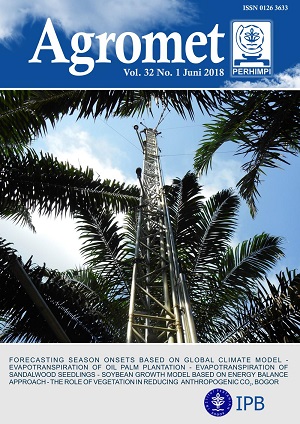The Role of Vegetation in Reducing Anthropogenic CO2 in Bogor City
Abstract
Vegetation has a role in reducing CO2 from anthropogenic activities through photosynthesis. Fuel combustion is one of the activities that greatly contribute to CO2 emissions. As a city with many destinations, the possibility of CO2 emissions will increase in Bogor especially on holidays because of motorized vehicle from other cities. This research aims to determine the absorption capability of vegetation in Bogor City in reducing CO2 emitted from fuel combustion. We analyzed CO2 data for 2017 by day to obtain traffic levels in the city assuming that people mobility using vehicle was influenced by day. Then we separated CO2 data into slow and fast photosynthesis rate based on air temperature. We determined the absorption capability of vegetation at daily basis by calculating the difference between the min and the max of CO2 concentration divided by the min of CO2. Our results showed that the lowest CO2 level was in Sunday. On that day, the average air temperatur was high indicating the less CO2 concentration. Our one-way Anova test confirmed this finding. The finding revealed that the absorption capability of vegetation to reduce anthropogenic CO2 was still limited. To implement Bogor as green city, more vegetations and gardens are needed to balance an increased CO2.
Authors
WardhaniA. K., BudiantoB., & SugiartoY. (2018). The Role of Vegetation in Reducing Anthropogenic CO2 in Bogor City. Agromet, 32(1), 42-50. https://doi.org/10.29244/j.agromet.32.1.42-50
Copyright and license info is not available

